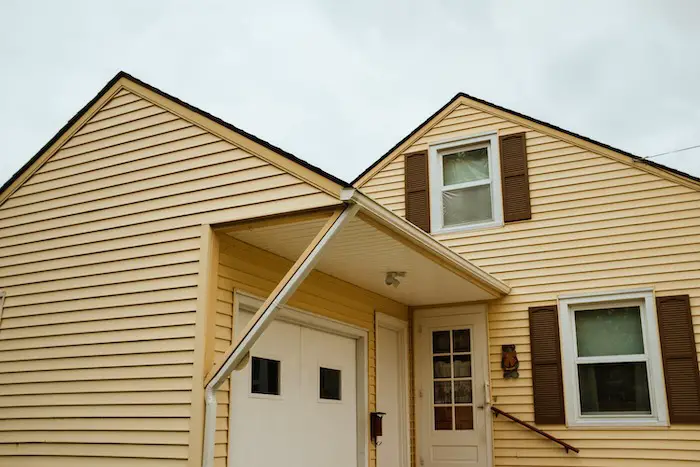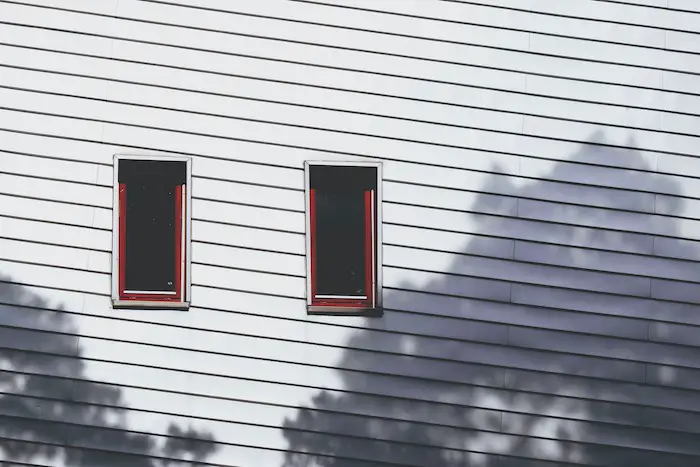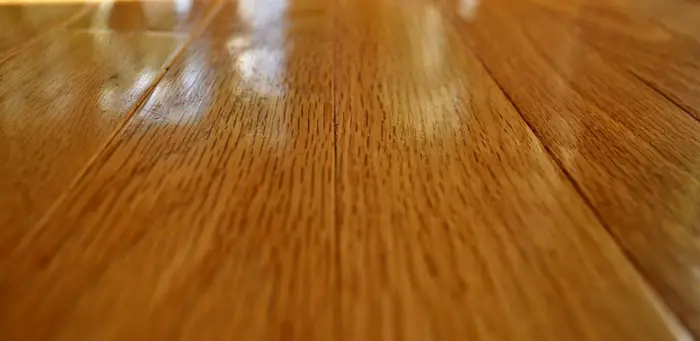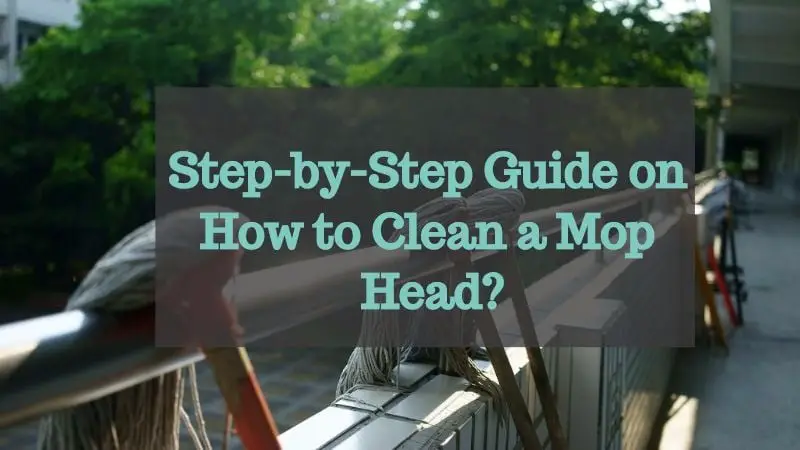Since Vinyl Siding is an exterior wrapping material for your home, it is exposed to many elements and dirt. These elements include molds, mildew, pollen, insect and bird dropping, rust, spider webs among others. Although this building material is known to take this abuse in strides, with time it may cave in. As such, to prevent this, you will have to clean it as a maintenance practice.
Therefore, does bleach damage vinyl siding when used to clean? No, bleach does not damage vinyl siding if used correctly and in proper dilution ratios. Proper dilution is in the ration of bleach: water, which should be 0.4:1. Failure to dilute bleach, you risk damaging your vinyl siding since bleach is highly corrosive. Still, on using bleach, make sure you rinse your vinyl siding immediately after washing.
This article will look at how to use bleach on vinyl siding, other alternatives for cleaning siding, tips, and safety measures to consider when washing vinyl siding. Keep reading to learn more about using bleach when cleaning vinyl siding.
How to Use Bleach on Vinyl Siding
If you want to remove molds and mildew from your vinyl siding, bleach is your best shot. Matter of fact, bleach is effective for getting rid of molds, mildew, stubborn baked-on dirt, soot, and stains. So, how do you clean vinyl siding using bleach? The following is a step-to-step procedure
Step 1: Mix bleach and water by adding one-quarter of laundry bleach to one gallon of water to have a cleaning solution.
Step 2: Pour the cleaning solution in a pump sprayer.
Step 3: Cover the plants around your home with a plastic sheet to prevent the bleach from damaging them. Remember after you are done rinsing the vinyl siding, uncover your plants to avoid overheating to your plant since it could result in their death. Alternatively, to protect your plants, wet them down before cleaning your house.
Step 4: Spray the solution using the pump sprayer working from bottom to top.
Step 5: Allow the solution to stand on the vinyl surface for about 10-15 minutes.
Step 6: After the 10 minutes scrub the surface from bottom to top using a long-handled brush with softs bristle.
Step 7: When you are satisfied that the surface is clean, rinse off the bleach.
Alternatives for Cleaning Vinyl Siding
Other than using bleach, there are other methods for cleaning your vinyl siding. They include:
- Using Home Cleaning Solutions
Home cleaning solutions such as vinegar are also useful when it comes to getting rid of the grime from the exterior surface of your house. Other than vinegar you will need some water to make a solution and soft cloths or microfiber for scrubbing the stains.
For this process, you will need to mix water and vinegar in the ratio of 70 percent of water to 30 percent of vinegar. The rest of the steps will follow that of using bleach.
Another home cleaning solution you can use is the laundry detergent. Mix one-third of a cup of laundry powder detergent with one-quarter liquid laundry detergent bleach and add a two-third cup of powdered household cleaner. Use the resultant solution to clean your siding following the process highlighted above.
- Using Cleansers Designed for Vinyl Siding
If you are having a hard time accessing home cleaning solutions you can use cleaners that are specifically designed for vinyl sliding. Manufactures of vinyl siding recommend that you check with your local building material shop for such cleaners. You can also request the cleaners from your siding contractor.
Before using your cleaner make sure, you test it on an inconspicuous area to be sure that it does not cause damage to your siding.
Apart from using bleach to clean off the mold and mildew, you can use a mold and mildew remover found in your local building material shop.
- Pressure Washing
Pressure washing is the best method for getting rid of dirt and grime. When pressure washing, you can choose to use a garden hose fitted with a spray nozzle or a pressure washer.
Consider the following tips:
- Make sure the stream of water is at an eye level and pointed straight at the vinyl siding. Should the water be at an angle, you risk driving water behind the siding which may eventually damage it.
- Spray from the bottom and work your way up when washing but when rinsing, start from the top and work your way down
- When using a pressure washer, set it on a medium spray pattern
- Only use cleaners that are approved for vinyl siding. Avoid cleaners that have contents of undiluted bleach, liquid grease remover, organic solvents, and other similar content.
- Using Professional Cleaners
Should all the above methods not work or appeal to you, do not worry. You can higher an expert vinyl siding cleaner to get your house looking as clean as new.
Tips for Cleaning Vinyl Siding

- The most important tip is to follow the instructions given by the manufacturer before trying out any method. This is especially important when using a pressure washer on vinyl siding. Depending on the quality of your siding, pressure washing can cause damage to it
- Avoid using cleaners that contain nail polish, furnish remover, or undiluted chlorine bleach. These harsh chemicals may cause damage to the surface of your vinyl siding.
- For scrubbing, use long-handled brushes with soft bristles. Highly abrasive scrubbers or steel wool may end up damaging your siding.
- To reach the difficult parts use a small brush such as a toothbrush to scrub off the dirt.
- When using bleach, rinse the surface immediately after washing to avoid any possible corrosion.
- For a new cleaning solution, test it in a hidden area to determine if it safe for use
- When hand washing your siding, work in small portions of about 5 by 5 foot. This helps you to determine what is clean and what is dirty
- It is recommended to wash your siding from the bottom to the top to avoid streaking
- When rinsing work from top to bottom to avoid uneven drying and spotting
- Be gentle with your siding when scrubbing. Too much pressure can cause it to crack
- When cleaning tough spots, you can add some baking soda paste to your cleaning solution. Due to its abrasive nature baking soda helps to break the tough stain or spot
- Work on a cloudy day and not a sunny one, this helps to avoid some areas drying faster than others which in turn causes spots.
- Close all the doors, windows and any entry point to your house. It helps to avoid spraying water into your house.
Safety Measures when Cleaning Vinyl Siding
- If you are using bleach or any corrosive chemical use a long-handled brush to scrub off the stains and dirt
- For protective gear, wear gloves, long sleeve shirts, long pants, goggles and closed-toe shoes when dealing with chemicals. You should also put on a face mask to avoid breathing in the chemical fumes
- Remove any outdoor furniture, toys and items to avoid wetting them
- If you are going to use a ladder, have a friend hold it to avoid any accident
- Always follow the instruction on the cleaning solution
- Do not mix bleach with any cleaner or chemical that contains ammonia or vinegar. Mixing these two chemicals leads to a chemical reaction that produces a poisonous gas that may choke you and lead to suffocation
- When mixing solutions that include bleach, make sure you do it in an open area to avoid choking on the fumes released by the bleach
- Turn off all unplug all electrical appliances
Related Questions
Can bleach leave a stain on Vinyl?
Yes, bleach is highly corrosive and that means it can leave a stain on your vinyl siding. That is why it is recommended that you use bleach in a very diluted form. The undiluted bleach will have to take a very long period for it to cause any discoloration on your siding.
Other than that, note that bleach stains on your vinyl are irreversible, there is no formula or tips for getting rid of it. As such, should you corrode your siding, it is recommended that you get rid of the stained area and patch it up with new vinyl material. You will agree that that is quite expensive, right. Therefore, your best shot is to keep undiluted bleach away from your vinyl siding
How does pressure washing damage vinyl siding?
From the article above, we have mentioned that if done wrongly pressure washing can damage your siding. To start, as mentioned before pressure washing can drive water behind the siding causing it to get damaged. Secondly, the pressure applied may cause the paint to fall off from the material.
This is especially the case for old houses. Other than that, if you accidentally direct the pressured water to the window, you risk breaking them. That is why it is recommended you follow instructions when it comes to pressure washing vinyl material at your house.
See Also: 6 Best Brush For Cleaning Vinyl Siding


